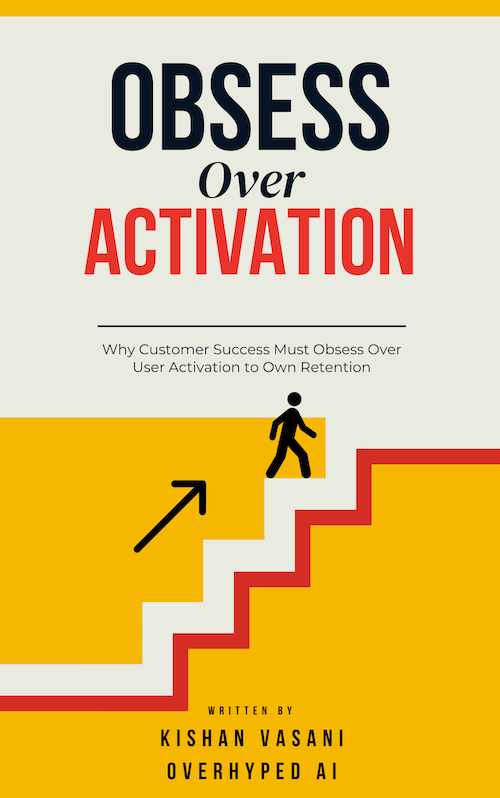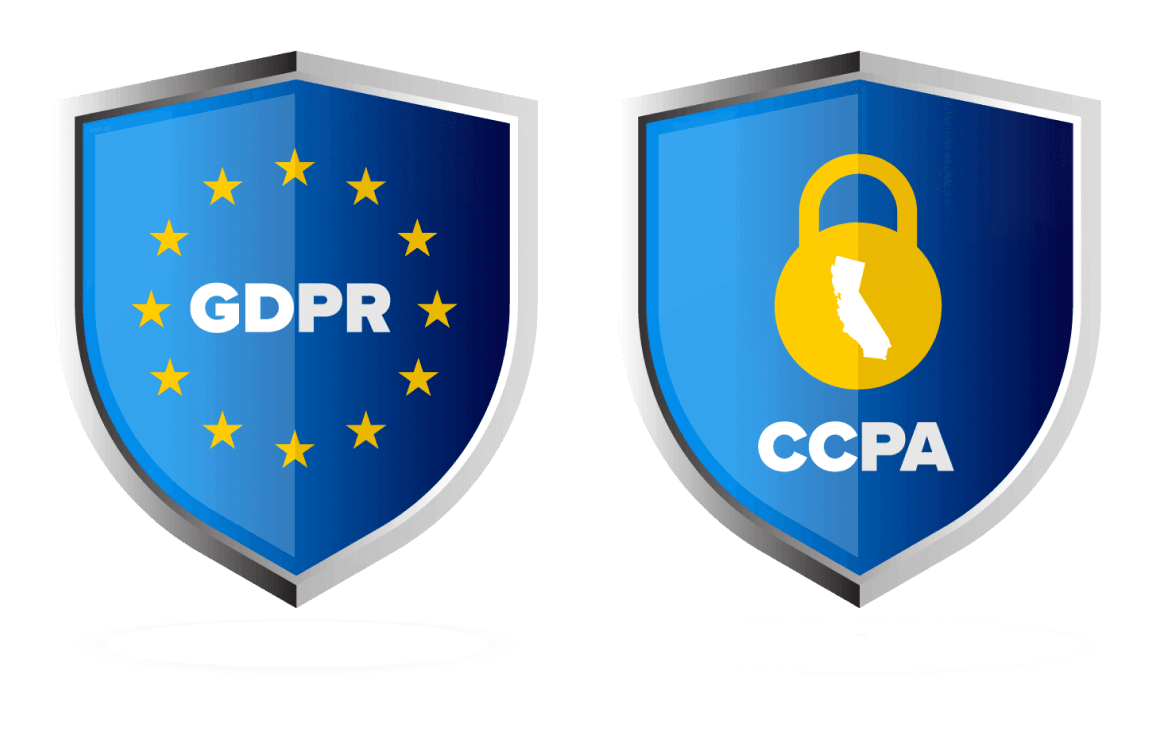Got a user retention headache?
Customer Success obsessing over activation is the remedy.
P.S. Product & Growth Teams: Please Take Note
By Kishan Vasani, Founder & CEO, Jan '25
TL;DR: Take the time and effort to read this non-AI generated post you lazy so-and-so! 😁
This post portrays my view of the world regarding the successful adoption of B2B SaaS products. You may not agree with everything but my hope is that it will ignite (or revive) this important conversation.

The one word missing from CS vocab
Activation… a word that is almost entirely absent from the vocabulary of every Customer Success professional. I scoured the web and there’s barely a site or blog that mentions CS and activation in the same breath. It’s not mentioned in the job description of common CS org roles, like CSMs or Onboarding Specialists, and it’s not on the agenda at CS conferences. WTF!
User activation is a leading indicator of retention, so why aren’t CS folks shouting about this from the rooftops? Have Product & Growth teams taken total ownership of this metric? Has all the talk from CS about onboarding and adoption made activation a footnote? Is it a terminology issue?
In PLG companies, Product is responsible for activation 45% of the time, while Customer Success owns it just 10% of the time. In sales-led companies, Customer Success is accountable for activation in only 39% of cases, compared to 28% where Product takes the lead.
If you’re a CS leader reading this, I’d love to hear your thoughts.
Let’s not put the cart before the horse. Said another way, you don’t get a second chance to make a first impression. With the
average activation rate of B2B SaaS products at only 30%-40%,
there’s clearly a lot more work to do. Once it's above 70%, then sure, let’s move on to downstream adoption metrics.
This may be a 'sky is blue' kind of comment, but I'll say it anyway. It only follows that increasing your activation rate positively affects your entire user adoption funnel, from engagement to retention to champion.
User activation is a team sport, but there’s only one coach
Product, Growth, and Customer Success are all players but CS must own activation. Why?
- Activation is the leading indicator of user retention, the north star of CS teams.
- Activating a user means ensuring that the user experiences the core value of a product as quickly as possible. Call me crazy but isn't that the core purpose of the CS org?
Of course, there are economic realities associated with scaling CS resources but let’s put them aside for the moment. Isn’t the ideal solution for maximizing user activation having a product expert hold a new user’s hand and take them all the way to the aha moment?
If you buy into this, then the challenge becomes how to give end users this concierge-like experience without breaking the bank. More on that later. By the way, if you think that there’s a better (more idealistic) solution, I’m eager to hear it. I mean, who doesn’t want a bit of white glove love?
You might argue that oftentimes there are few or no CS resources, particularly in product-led companies. Well, for all the column inches they get,
product-led companies only make up ~20% of the market,
the rest being sales-led. Also, it’s no secret that even product-led companies have CSMs, especially as they scale and move upmarket towards the holy grail of Enterprise customers. Given this, I think it’s fair to say that the vast majority of SaaS companies (who have raised Series A funding) have a CS person.
I’m not saying that Product and Growth aren’t key players, they are. In this case, they are co-pilots of user activation, but on every plane, there’s only one Captain, in this case, that must be Customer Success.
User activation, the economy, and economics
If you're a CS leader at a SaaS company, you’ve undoubtedly felt the pinch of the economic downturn since 2022. The new mantra has been “profitable, efficient growth”. At first, you likely had to trim costs by reducing headcount and going through a line-item rationalization exercise. While this may have made you more efficient, likely in the short-term, expansion has been a tough nut to crack, right?
For CS teams, staying relevant meant being revenue-centric. Not necessarily a bad thing but when companies are under the gun, this focus maniests in negative ways, like price hikes, often unjustified, the endless upsell offers.
All of this came at a cost, one which was in my opinion damaging and hard to accurately measure. This is the change in perception (and reality) of the CS function by end users. No longer is CS purely seen as a user’s insider or partner at a vendor. Call me a traditionalist, but I agree with Jason Lemkin, Founder of SaaStr, that CS should be solely focused on delivering value and incentivized on Gross Revenue Retention. But I'm likely in the minority.
While market forces dictated this change, CS leaders should be credited for largely embracing the new reality. Today, I see an increasing number advocating for CS to be tightly aligned and integrated with the revenue function.
What has all this got to do with user activation? Well, even if your activation rate is 35%, you’re leaving a ton of upside on the table! Imagine the financial impact of moving this metric to 50%. How many more users will be activated? How many more will be retained? Not to mention the fact that a percentage of these additional users will expand the relationship. Cha-ching! 🤑
The next question is how. Revisiting the principle of profitable efficient growth, the Pavlovian response is to implement and utilize digital adoption platforms, like Pendo and WalkMe. You know, the ones that offer ill-timed product tours, irritating message modals, and overwhelming checklists. But there are two issues with this:
- These are the purview of Product teams, and rightly so.
- These solutions have reached their upper limit of impact (i.e. the 30%-40% average activation rate).
So what’s the answer? Until recently, there wasn’t a good one. Rolling out a digital CS program is worth serious consideration, though. The question is what and how exactly.
Over the last six months, there’s been a fundamental shift in the capabilities and quality of conversational AI and its stack of technologies. We’re now at a point in time where AI voice agents can hold near human-like calls armed with the vast knowledge of large language models (LLMs) like GPT4o.
Don’t believe me? Try Advanced Voice Mode (AVM) in ChatGPT. Frankly, it’s so good that my baseline expectations for voice AI have fundamentally shifted. Here’s one example of how we use AVM at Overhyped. While I have an incredible panel of CS leaders who act as domain experts and advisors, they aren’t available 24/7 so we’ve created a Custom GPT (think persona) that plays the role of a world-class Customer Success professional and I speak to it whenever I need a quick answer or want to test a thought safely before sharing it with the pros.
In the context of user activation, you could create your own AI voice agent that would play the role of a Product Onboarding Specialist. It would give every single one of your users a warm and personalized welcome, build a relationship with them, and guide them to the core value of your product, all without breaking a sweat. Oh, did I mention that you should give this high-touch onboarding experience to freemium and free trial users if you have them? If you do, you should certainly expect a nice bump to your free-to-paid user conversion rate.
A number of critical financial metrics can be positively impacted by having a strategic focus on user activation paired with the right kind of execution, from CAC to LTV, and from ARR to ARPA.
Frictionless vs. less friction
Speaking of execution, one of the key tenets of the product-led movement is the idea of a frictionless user experience. The theory is to get out of the user's way in order to get them to realize the value of a product as quickly as possible, AKA reducing time-to-value. While the intention is honorable, the consequence can be a confused user. 😕
The reality is that users are halo-dropped into products and are often left to figure it out for themselves, or perhaps worse still, they’re left to navigate endless annoying adoption features, like modals, checklists, and guides. All of this, in the name of self-serve. Let's leave 'do-it-yourself' exclusively to IKEA I say!
Seriously though, over the last few years, I’ve tried out dozens of new SaaS products, from Equals to ClickUp to ChatGPT.
Not one of them offered me a white glove onboarding experience, human or AI.
So unless the first session experience was extremely intuitive or my need for a solution was very urgent or important, I often churned, quickly.
Okay, so I’ve dipped my toe into the world of Product now, but hey, if CS is going to lead the charge for user activation, and given CS is the product expert on the frontline, they should not only know how it all works, but they should have a point of view too.
Product onboarding should NOT be frictionless; it should have just the right amount of friction, AKA healthy friction, or Goldilocks friction (I just made that term up). You want just enough friction that filters out tire kickers while allowing you to personalize the experience. In the world of user activation, and specifically Overhyped's product, our deliberate healthy friction is for your users to have a
mandatory onboarding call with an AI voice agent that will guide them to their aha moment.
Find me a Product Manager whose knee-jerk reaction isn’t “get the f*#k out” and I’ll hire them! But the truth is that it really works. I’ve seen
activation rates increase by as much as 3x
once a compulsory onboarding call became a part of the core experience. In case you’re wondering, we let our customers set what percentage of their end users have the obligation of joining an onboarding call. This creates a natural control group whose activation rate can be compared to those users who spoke to the AI voice agent.
So, in summary, we believe...
- B2B SaaS companies should be far more focused on user activation than they are today. Accepting anything less than 70% as your activation rate means that you're leaving serious coin on the table.
- User retention automatically improves when you start by fixing upstream metrics, i.e., activation. Win-win.
- Customer Success must own user activation, with Product/Growth teams co-piloting execution.
- In the age of AI, voice agents acting as Product Onboarding Experts, represent the ideal way to...
Activate Every. Single. User.
I hope you got something valuable out of this piece. I sure had a blast writing it.
With Overhyped AI, you can create your own voice agent (no coding required) that acts as the ultimate Product Onboarding Expert whose mission is to activate your users fast.
Finally, I would like to give a shoutout to the content of
Kyle Poyar and
Lenny Rachitsky which has supported some of this thinking and supplied several of the data points.

From Argh to Aha!
Our voice agent delivers a white glove onboarding experience to every single user and lifts activation by up to 3x.
Hyped to be backed by


From Argh to Aha!
Our voice agent delivers a white glove onboarding experience to every single user and lifts activation by up to 3x.
Hyped to be backed by


